Zebra Technologies TFF3110 WhereTag IV GT User Manual User Guide
Zebra Technologies Corporation WhereTag IV GT User Guide
User Guide
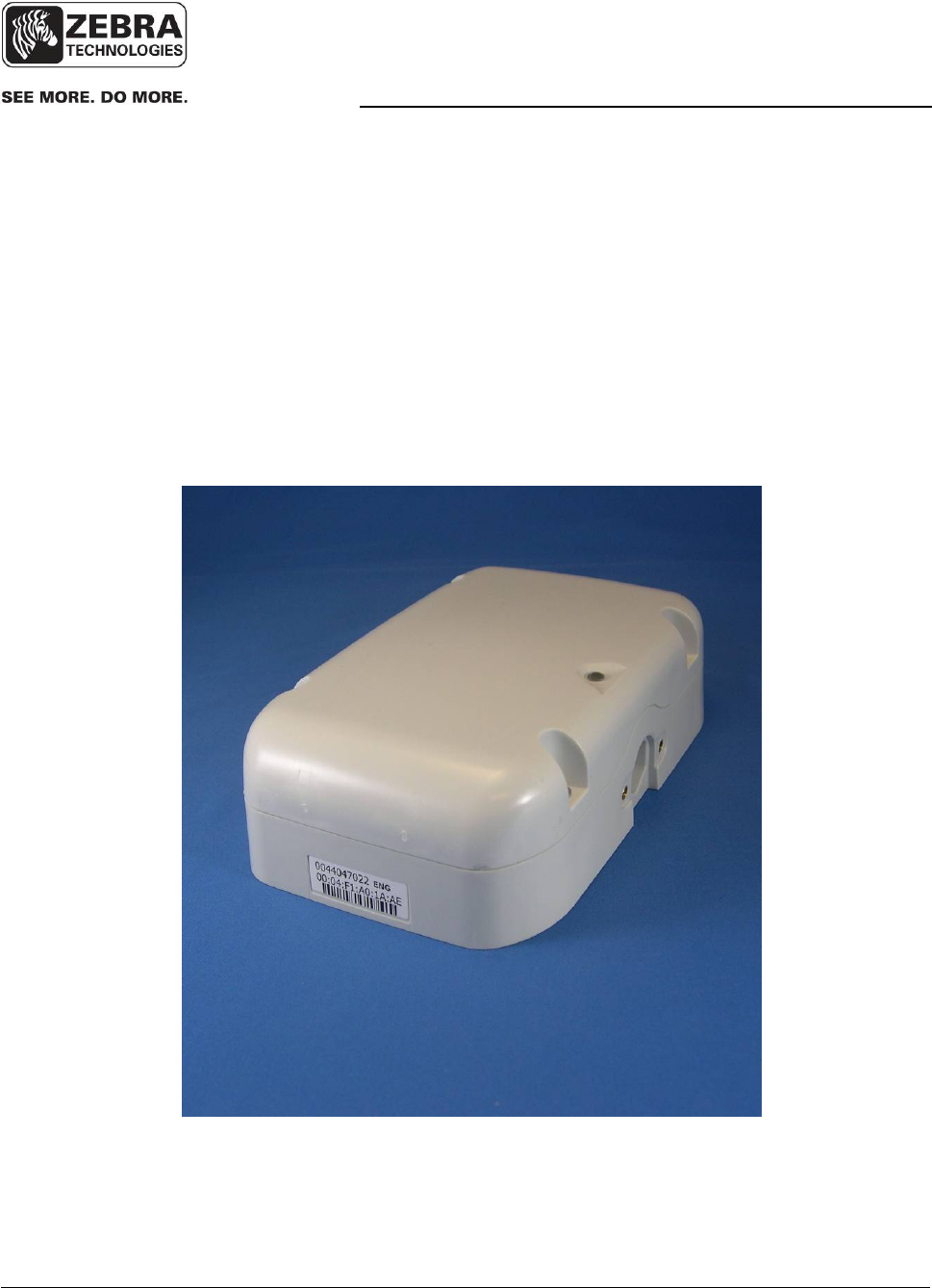
User Guide
1
User Guide, WhereTag IV GT, TFF-3110 D2280 Rev 02
© Copyright Zebra Technologies Corporation Confidential and Private
WhereTag IV GT™
Models TFF-3110
User Guide
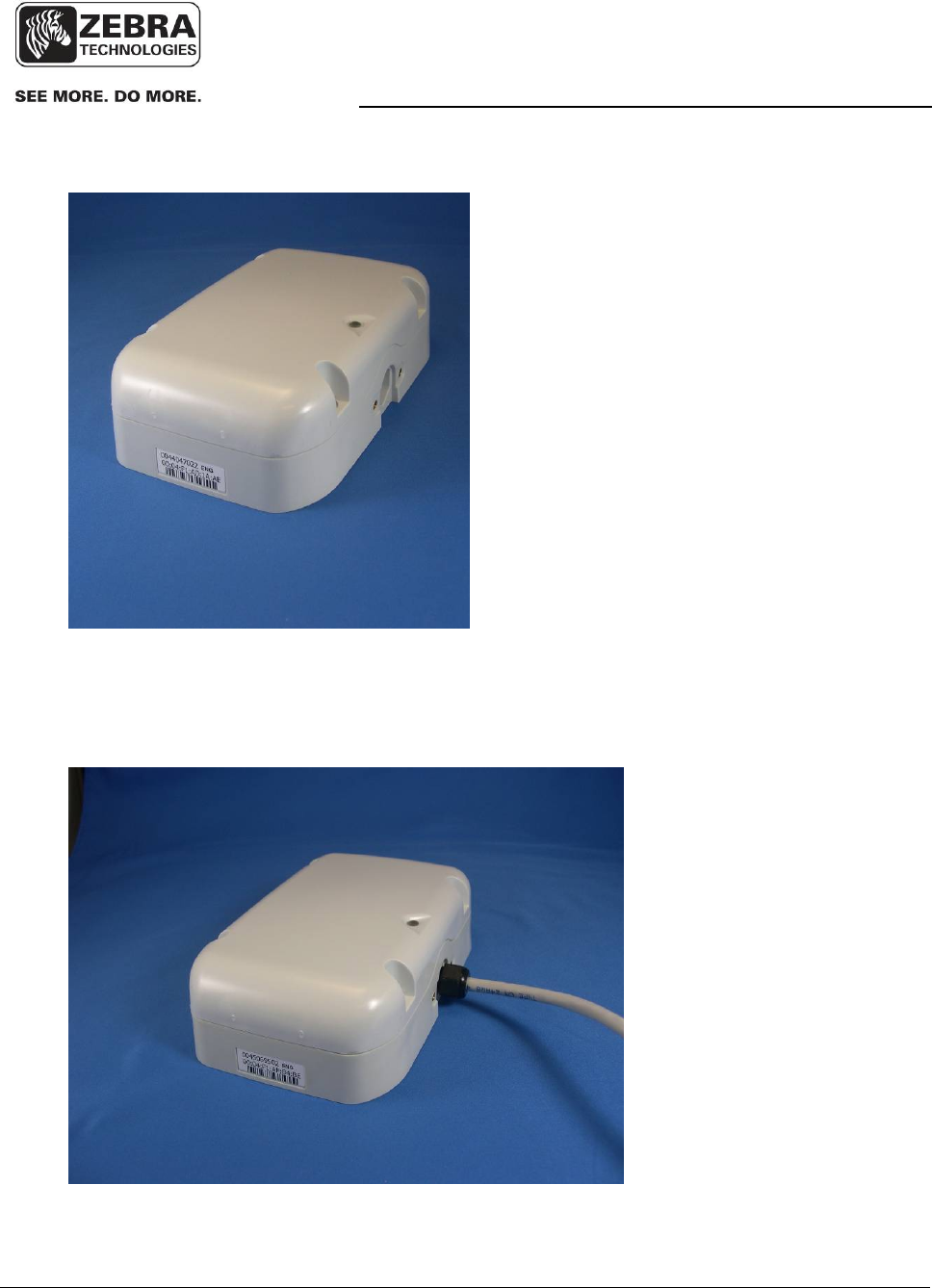
User Guide
2
User Guide, WhereTag IV GT, TFF-3110 D2280 Rev 02
© Copyright Zebra Technologies Corporation Confidential and Private
Name: WhereTag IV GT Basic
Part Number: TFF-3110-00AA
Name: WhereTag IV GT Vehicle
Part Number: TFF-3110-01AA
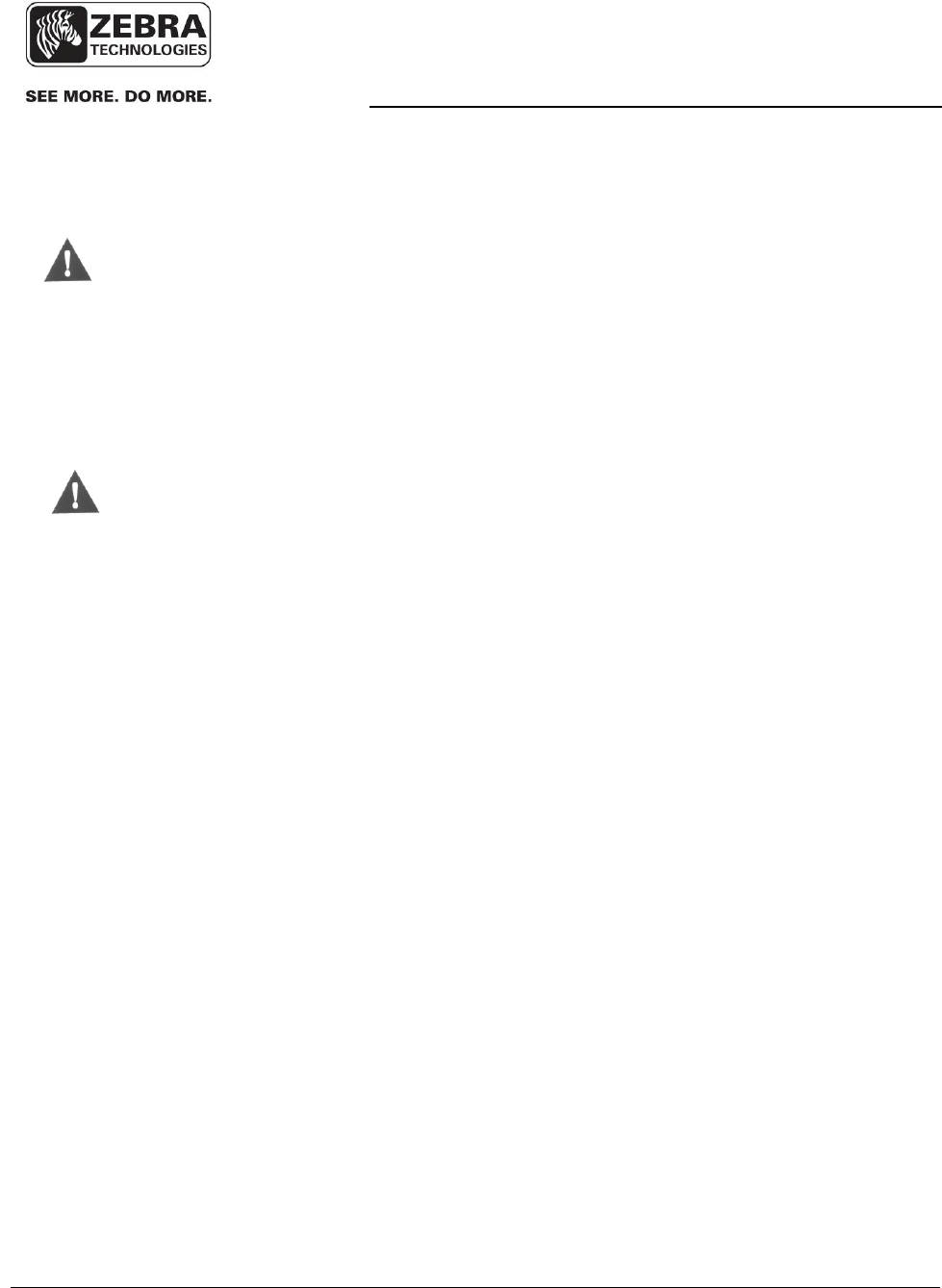
User Guide
3
User Guide, WhereTag IV GT, TFF-3110 D2280 Rev 02
© Copyright Zebra Technologies Corporation Confidential and Private
Typographical Conventions
Warnings call attention to a procedure or practice that
could result in personal injury if not correctly performed.
Do not proceed until you fully understand and meet the
required conditions.
Cautions call attention to an operation procedure or
practice that could damage the product if not correctly
performed. Do not proceed until understanding and meeting
these required conditions.
Notes provide information that can be helpful in
understanding the operation of the product.
CAUTION
NOTE
WARNING
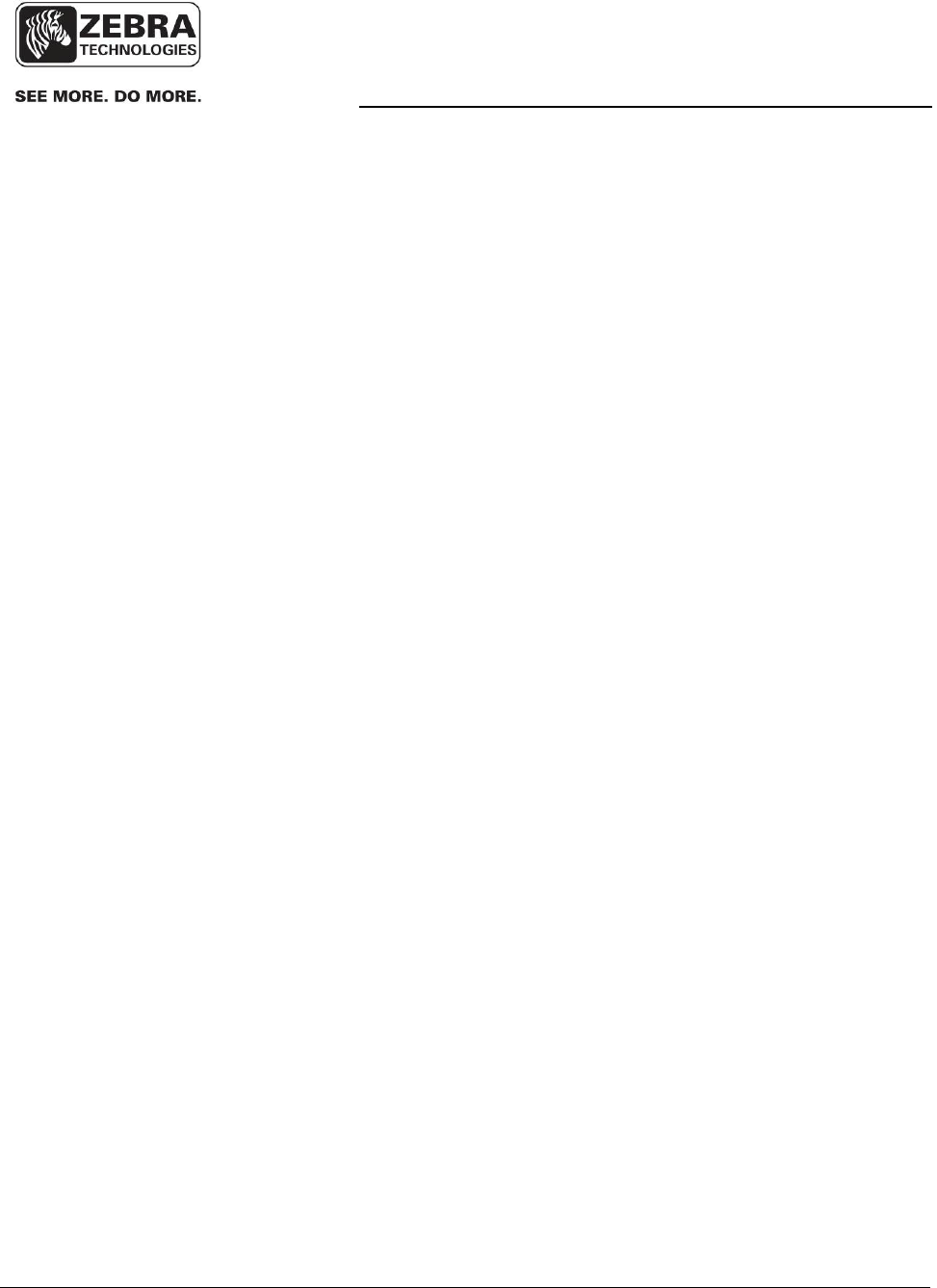
User Guide
4
User Guide, WhereTag IV GT, TFF-3110 D2280 Rev 02
© Copyright Zebra Technologies Corporation Confidential and Private
REGULATORY COMPLIANCE INFORMATION
FCC Regulatory Compliance Information
This device complies with FCC Part 15.247.
Operation is subject to the following two conditions:
(1) This device may not cause harmful interference
(2) This device must accept any interference which may cause undesired operation
This equipment has been tested and found to comply with the limits for a Class A
digital device, pursuant to part 15 of the FCC Rules. These limits are designed to
provide reasonable protection against harmful interference when the equipment is
operated in a commercial environment. This equipment generates, uses, and can
radiate radio frequency energy and, if not installed and used in accordance with the
instruction manual, may cause harmful interference to radio communications.
Operation of this equipment in a residential area is likely to cause harmful
interference in which case the user will be required to correct the interference at his
own expense.
RF Notice
Any changes or modifications to equipment not expressly approved by Zebra
Technologies Corporation could void the user’s authority to operate the equipment.
FCC Radiation Exposure Statement
This equipment complies with FCC radiation exposure limits set forth for an
uncontrolled environment. This equipment should be installed and operated with
minimum distance 20cm between the radiator and your body. This transmitter must
not be co-located or operating in conjunction with any other antenna or transmitter.
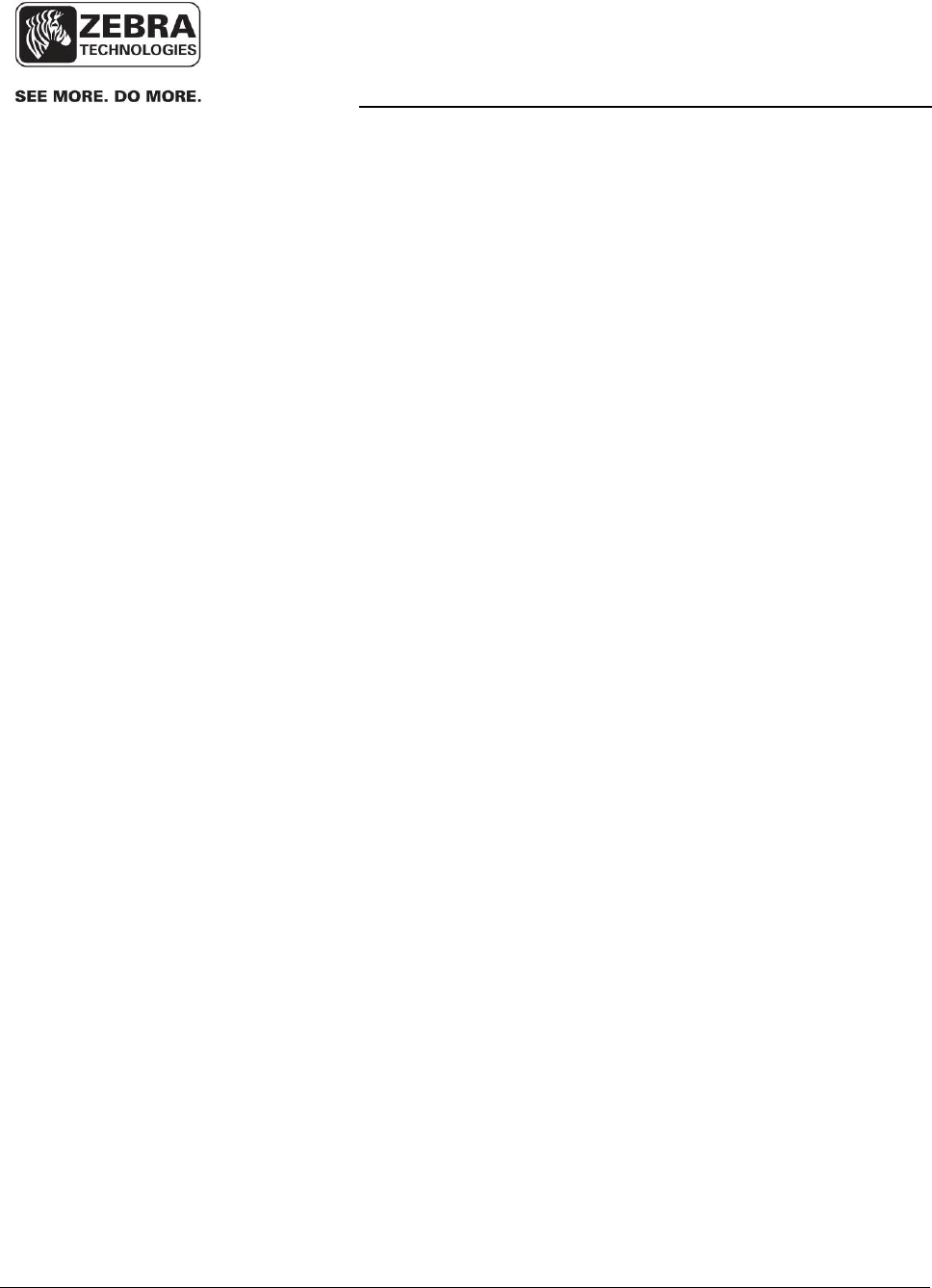
User Guide
5
User Guide, WhereTag IV GT, TFF-3110 D2280 Rev 02
© Copyright Zebra Technologies Corporation Confidential and Private
Industry Canada Compliance Statements
Operation is subject to the following two conditions: (1) this device may not cause
interference, and (2) this device must accept any interference, including
interference that may cause undesired operation of the device.
Le présent appareil est conforme aux CNR d'Industrie Canada applicables aux
appareils radio exempts de licence. L'exploitation est autorisée aux deux conditions
suivantes : (1) l'appareil nedoit pas produire de brouillage, et (2) l'utilisateur de
l'appareil doit accepter tout brouillage radioélectrique subi, même si le brouillage
est susceptible d'en compromettre le fonctionnement.
This Class A digital apparatus complies with Canadian ICES-003.
Cet appareil numérique de la classe A est conforme à la norme NMB-003 du
Canada.
This device and its antenna(s) must not be co-located or operating in conjunction
with any other antenna or transmitter.
Cet appareil et son antenne (s) ne doit pas être co-localisés ou fonctionnant en
conjonction avec une autre antenne ou transmetteur.
This equipment should be installed and operated with a minimum distance of 20cm
between the radiator and your body
Cet équipement doit être installé et utilisé à une distance minimale de 20cm entre
le radiateur et votre corps.
It is the responsibility of the installer to ensure that when using the outdoor antenna
kits, only those antennas certified with the product are used. The use of any
antenna other than those certified with the product is expressly forbidden by FCC
rules 47 CFR part 15.204 and IC RSS standards.
Il est de la responsabilité de l'installateur de s'assurer que lorsque vous utilisez les
kits d'antennes extérieures, seules les antennes certifiés avec le produit sont
utilisés. L'utilisation d'une antenne autre que ceux qui sont certifiés avec le produit
est expressément interdite par la réglementation FCC partie 47 CFR 15.204 et IC
normes RSS.
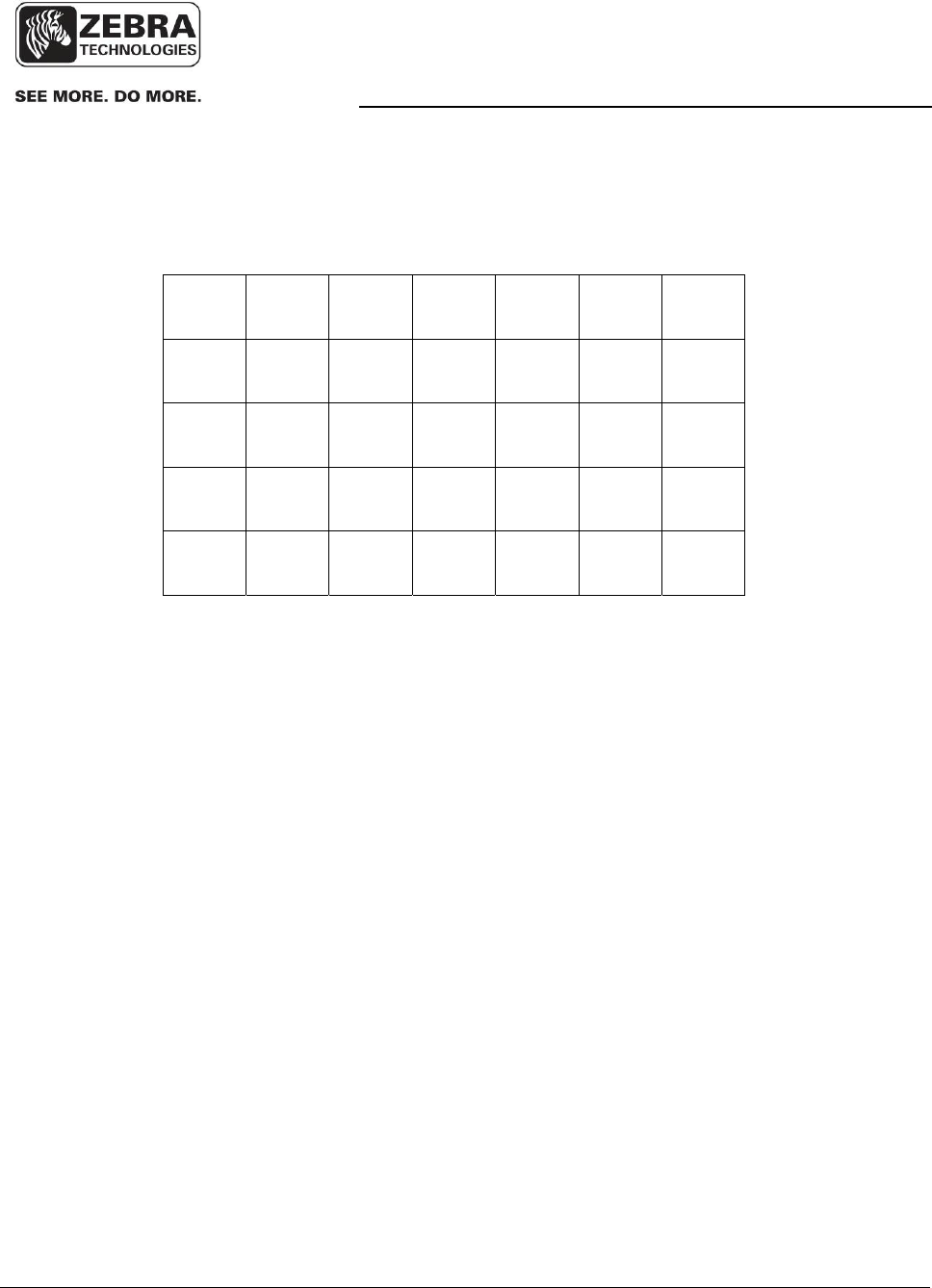
User Guide
6
User Guide, WhereTag IV GT, TFF-3110 D2280 Rev 02
© Copyright Zebra Technologies Corporation Confidential and Private
EU & EFTA Compliance Information
Approved for use in the following countries.
AT BE BG CY CZ DK EE
FI FR DE GR HU IE IT
LV LT LU MT NL PL PT
RO SK SI ES SE GB
IS LI NO CH TR
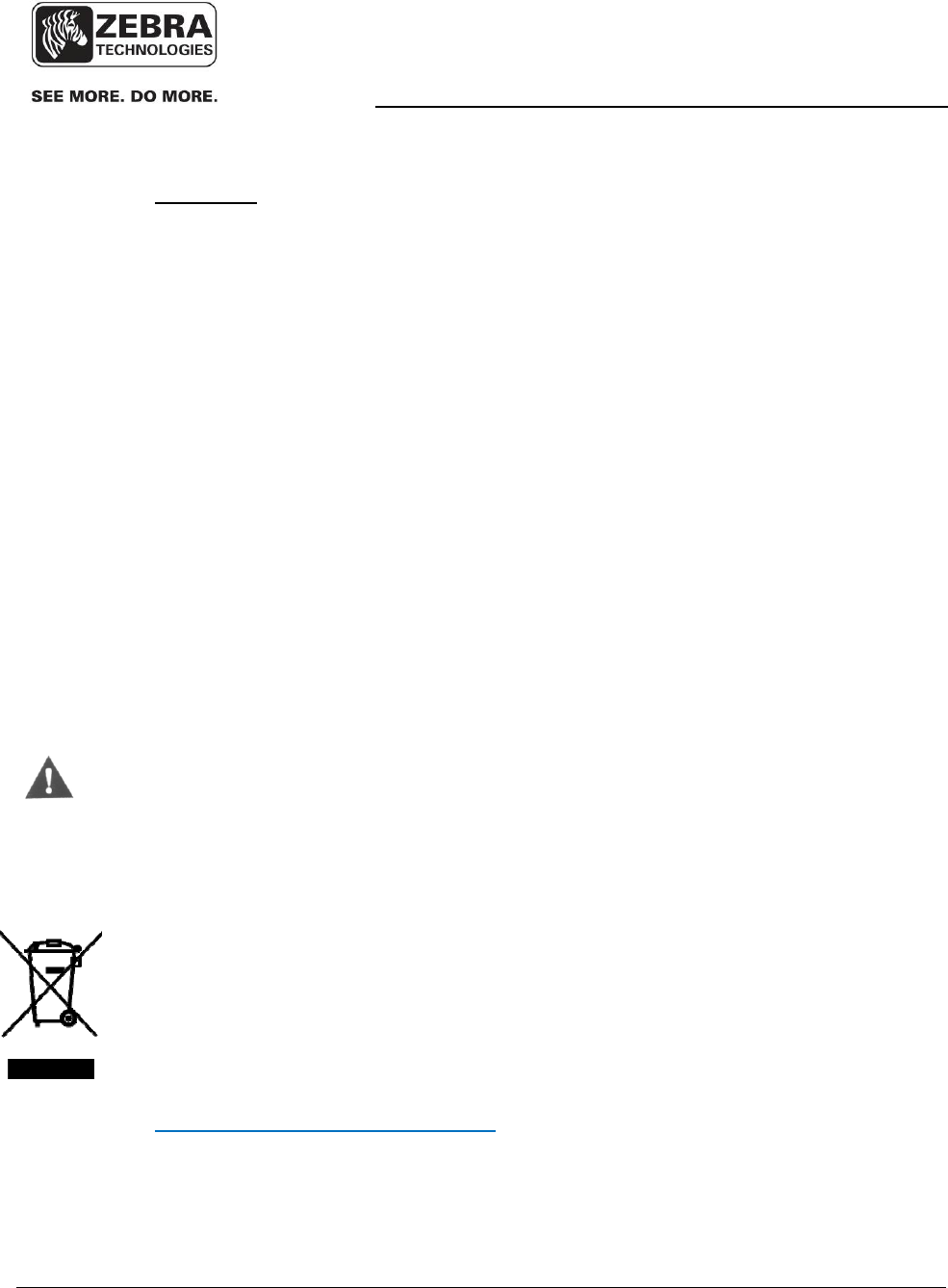
User Guide
7
User Guide, WhereTag IV GT, TFF-3110 D2280 Rev 02
© Copyright Zebra Technologies Corporation Confidential and Private
Cautions:
• No modifications to the tag allowed. This includes any type of modification to the
case, such as adding metal foils, holes, disassembly or modifications to the PCB
assembly, antenna, battery or modifications to the product labels, etc.
• Prior to installation, carefully inspect the tag, looking for crack, puncture or any
other breach of the plastic case. Damaged tags must not be used. Properly
dispose of any damaged tag.
• Never dispose of the tag in a fire.
• Deactivate the tag when not in use. It is mandatory to deactivate the tag prior to
shipment by airplanes.
• Follow limitations of use as set forth by any applicable regulatory bodies.
• The tag contains replaceable primary Lithium Thionyl Chloride (Li-SOCl2)
batteries, which must be replaced only by trained service technicians. ZTC offers
service to replace the batteries. Please contact your ZTC account manager for
more information.
• Do not attempt to open the tag and modify the battery due to fire, explosion and
severe burn hazard. Do not recharge, short circuit, crush, dissemble, heat above
100 oC (212 oF), incinerate, or expose contents of the battery to water.
• Do not dispose the tag or its lithium batteries in unsorted municipal waste. In
most countries, recycling programs are available through non-profit organization,
mandated by local government or organized on a voluntary basis. Contact your
local government for disposal practices in your area. ZTC offers recycling
programs in certain geographic areas. To determine if a program is available for
this product in your area, please refer to our web site at:
http://www.zebra.com/environment.
• When not in use, the tag should be stored in dry and cool conditions at a
temperature preferably not exceeding +30 oC (86 oF).
WARNING
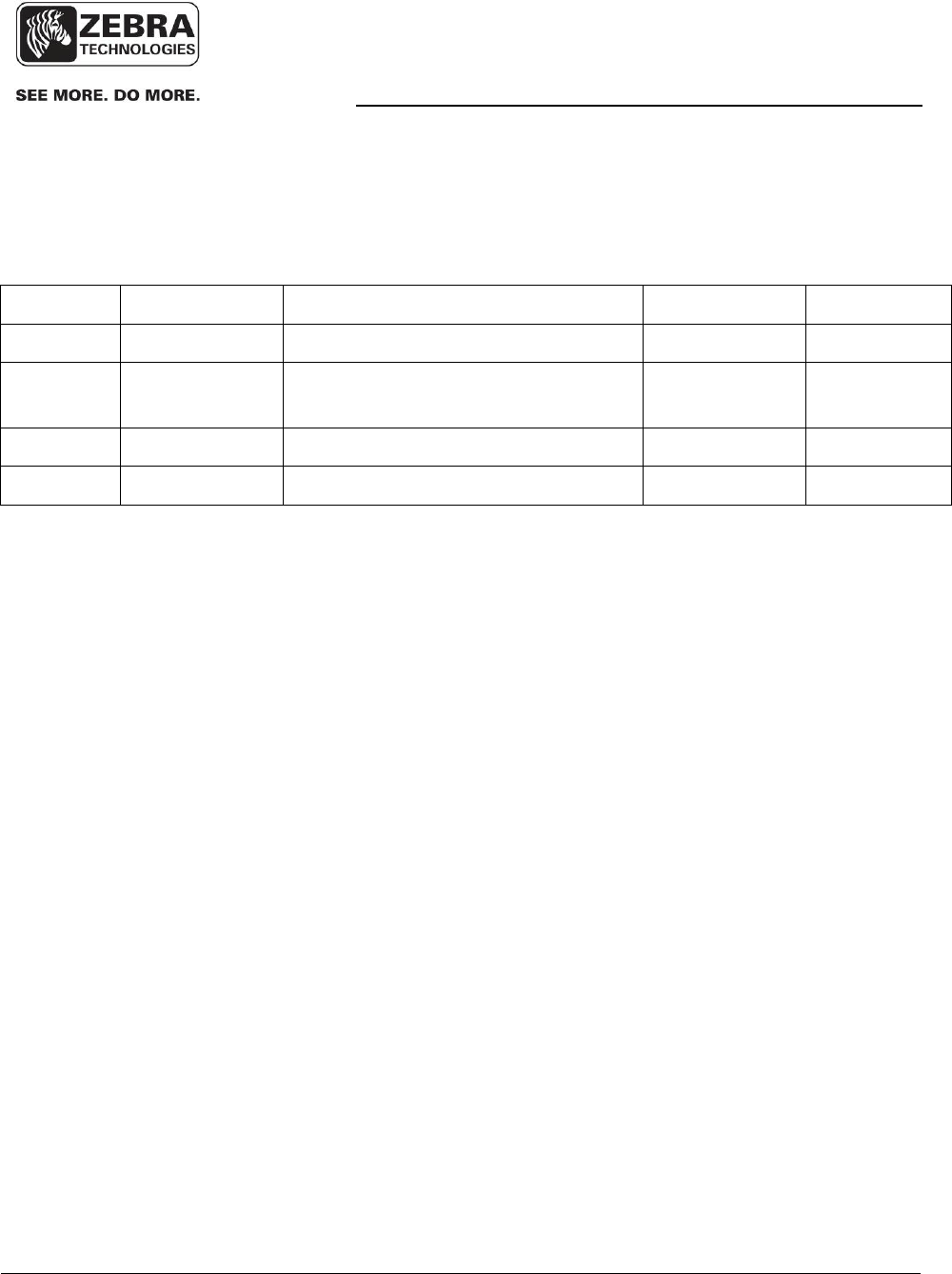
User Guide
8
User Guide, WhereTag IV GT, TFF-3110 D2280 Rev 02
© Copyright Zebra Technologies Corporation Confidential and Private
Document Revision History
Revision Change Change Description Date Initials
01 Draft 2/26/12 HH
02 Draft #2: Change to one model #,
TFF-3110, for both tag versions. 3/6/14 HH
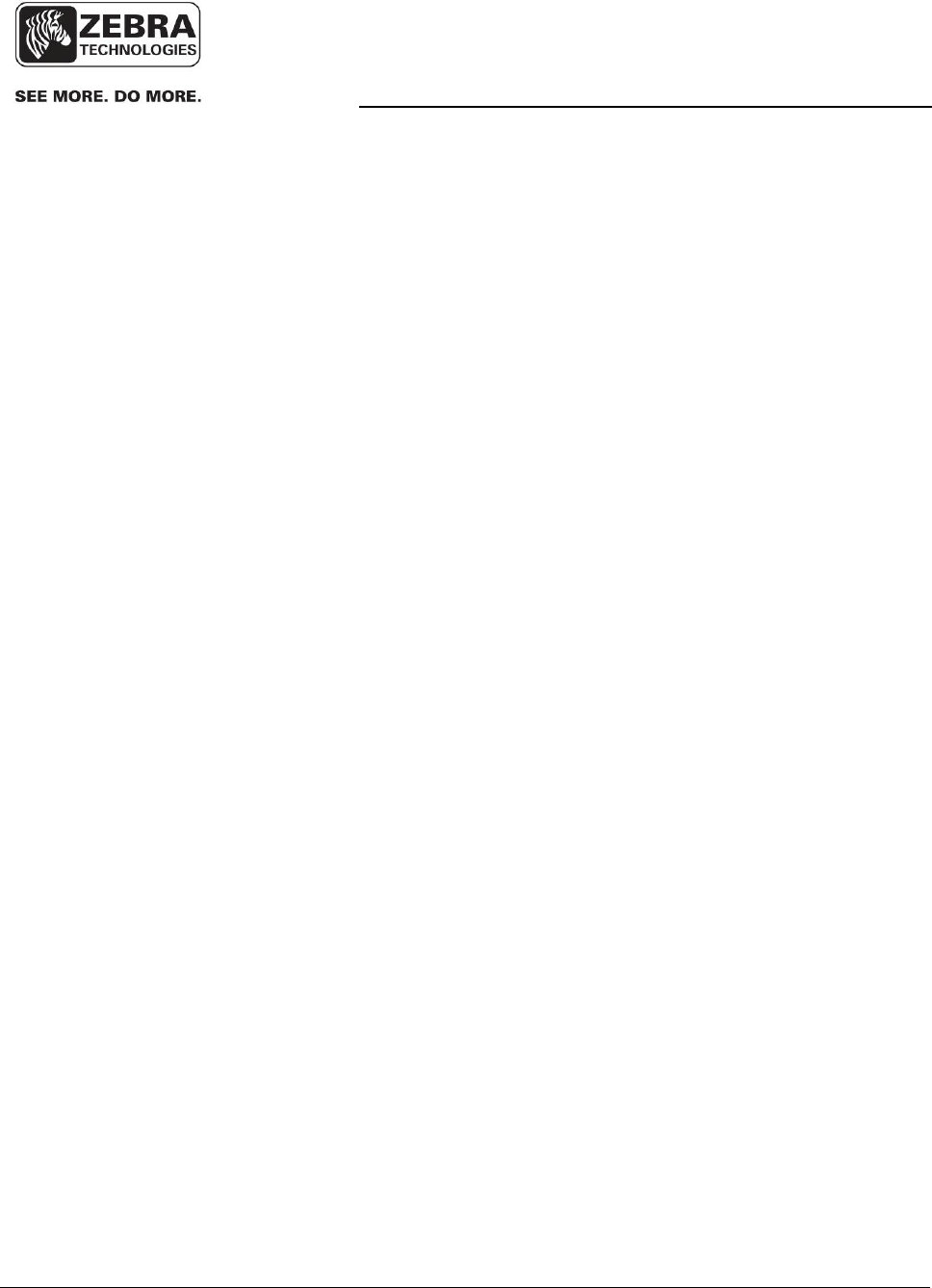
User Guide
9
User Guide, WhereTag IV GT, TFF-3110 D2280 Rev 02
© Copyright Zebra Technologies Corporation Confidential and Private
Table of Contents Page
REGULATORYCOMPLIANCEINFORMATION..............................................................................................................................4
1INTRODUCTION.............................................................................................................................................................10
1.1SYSTEMOVERVIEW....................................................................................................................................................................10
1.2WHERETAGIVGTDEVICE.........................................................................................................................................................12
1.3WHERELAN™LOCATIONSENSOR(LOS).......................................................................................................................................13
1.4WHEREPORTIIIANDWHEREPORTIV...........................................................................................................................................14
1.5WHEREWANDHANDHELDPROGRAMMER.....................................................................................................................................14
1.6VISIBILITYSERVERSOFTWARE(VSS).............................................................................................................................................14
2TAGINSTALLATIONANDACTIVATION...........................................................................................................................15
3TAGMOUNTINGOPTIONS.............................................................................................................................................16
3.1INTRODUCTION.........................................................................................................................................................................16
4SPECIFICATIONS(SUBJECTTOCHANGEWITHOUTNOTICE)............................................................................................17
4.1WHERETAGIVGT(MODELTFF‐3110).......................................................................................................................................17
Table of Figures Page
FIGURE1ZEBRAREALTIMELOCATINGSYSTEMBLOCKDIAGRAM...............................................................................................11
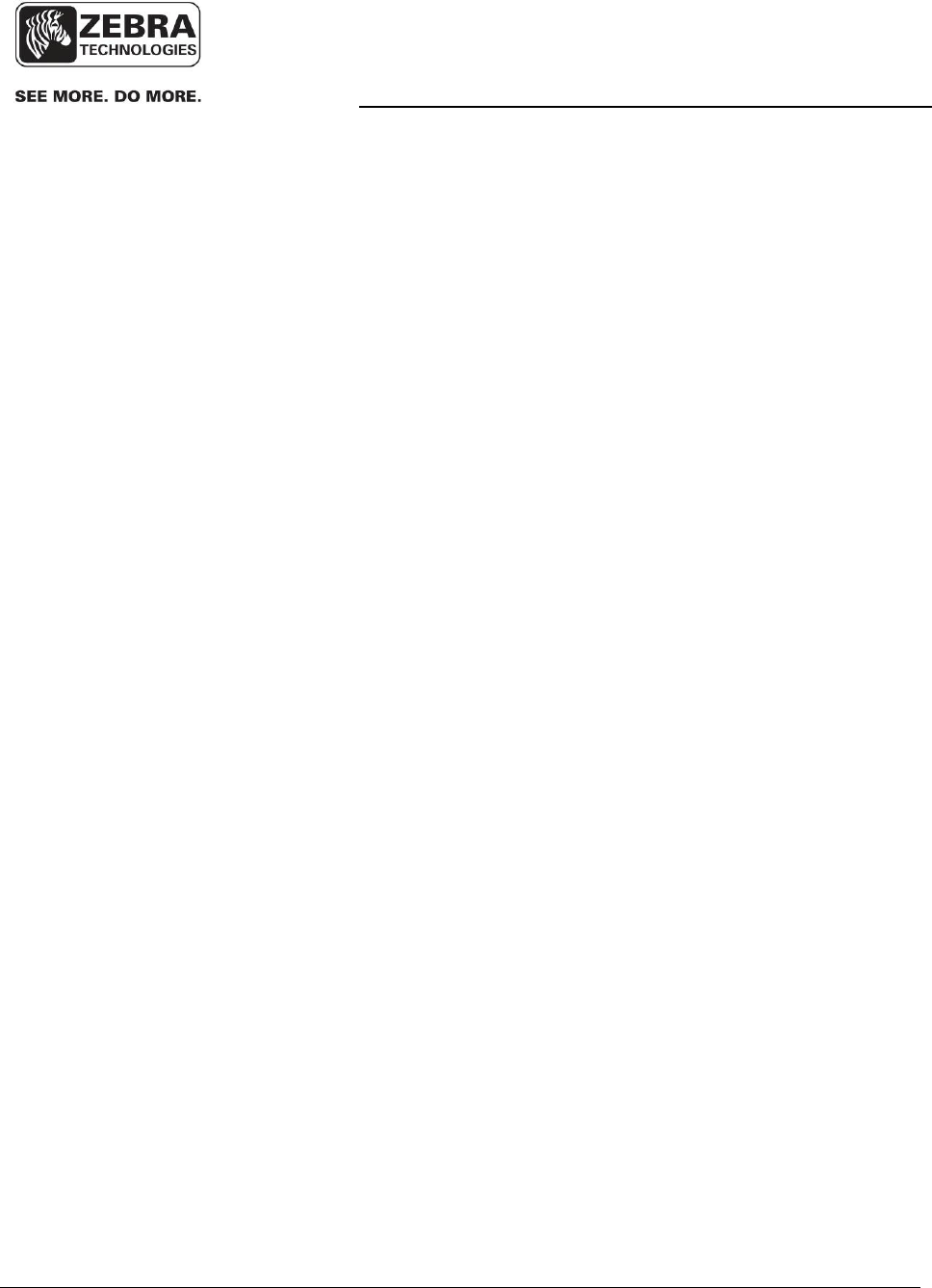
User Guide
10
User Guide, WhereTag IV GT, TFF-3110 D2280 Rev 02
© Copyright Zebra Technologies Corporation Confidential and Private
1 INTRODUCTION
1.1 System overview
The Zebra Real Time Locating System (RTLS) determines the position of tagged assets in
both indoor and outdoor facilities such as factories and freight yards. The system locates
tagged assets by a process involving redundant triangulation. Each tag autonomously emits
a 2.4 GHz direct sequence spread spectrum (DSSS) radio signal at a predetermined blink
rate. Each tag’s blink rate is randomized around its predetermined value to minimize the
number of collisions between transmissions made by different tags. The signal emitted by
the tag is received by a minimum of four Location Antennas. A typical transmission contains
a preamble which is used to synchronize the receiver, the tag’s serial number which
identifies the tag, a status word which monitors various tag functions, data stored in the tag’s
memory and finally a Cyclic Redundancy Check (CRC) used to assure that the tag’s
message is correct as received.
The principal components of the Zebra RTLS are shown in Figure 1 on page 9.
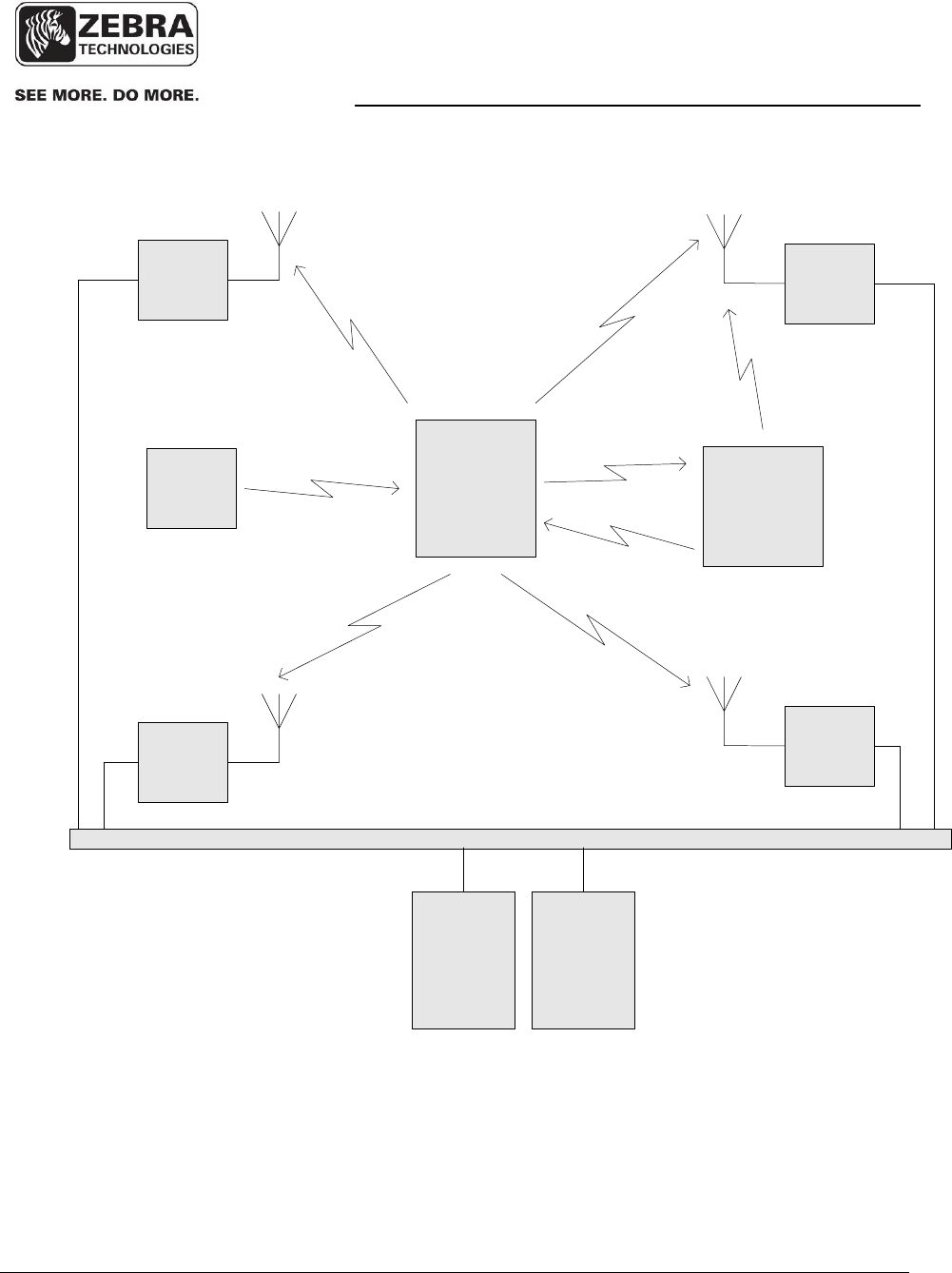
User Guide
11
User Guide, WhereTag IV GT, TFF-3110 D2280 Rev 02
© Copyright Zebra Technologies Corporation Confidential and Private
Figure 1 Zebra Real Time Locating System Block Diagram
WhereTag IV
ST
VSS Server VSS
Database
1-Way 2.4 GHz ISO24730 or 802.11b
(Range = 400 ft indoors or 3000 ft
outdoors)
WherePort
1-Way 115 kHz FSK
(Range = 25 ft)
WhereWand
Hand-held
Computer with
Laser Barcode
Reader
115 kHz
FSK
2.4 GHz
OOK
(Range = 3 ft)
1-Way 2.4
GHz
ISO24730
WhereLan WhereLan
WhereLan
WhereLan
Corporate LAN
Ethernet or
Wireless
802.11 Link
Ethernet or
Wireless
802.11 Link
1-Way 2.4 GHz ISO24730 or 802.11b
(Range = 400 ft indoors or 3000 ft
outdoors)
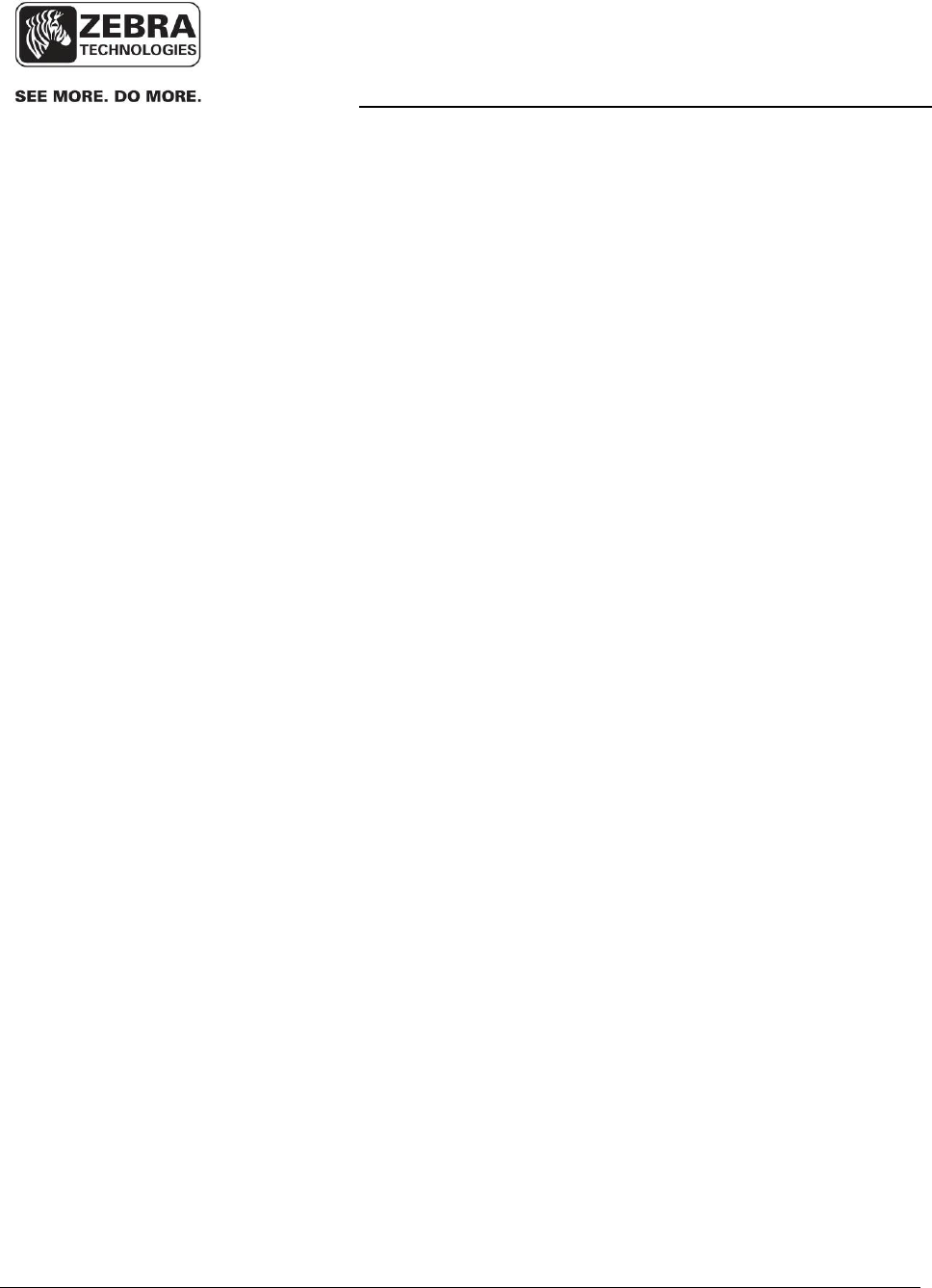
User Guide
12
User Guide, WhereTag IV GT, TFF-3110 D2280 Rev 02
© Copyright Zebra Technologies Corporation Confidential and Private
1.2 WhereTag IV GT Device
The WhereTag IV GT is a component of the Zebra Real Time Locating System (RTLS). It
can be attached to assets whose status must be quickly and accurately monitored.
Examples are the movement of a shipping container through a loading yard or a trailer
through a warehousing facility.
The WhereTag IV GT "blinks" a radio frequency (RF) transmission at a pre-programmed
rate ranging from 1 second to 5 days between blinks. The Zebra RTLS infrastructure
receives these blinks and use sophisticated Differential Time of Arrival, (DTOA), algorithms
to determine the location of the tag. Accuracy of this determined location can be as low as 2
meters and is nominally within 3 meters in most installations.
The WhereTag IV GT complies with the ISO 24730-2 RTLS standard. It operates in the
globally accepted 2.4GHz frequency band and transmits spread spectrum signals in
accordance with the standard. The use of direct sequence spread spectrum technology
provides extremely long range; in excess of 1,000 meter locate range outdoors, and 120
meter locate range indoors.
The WhereTag IV GT also incorporates an 802.11b/g transceiver for data communication
and/or positioning by standard or location-enabling 802.11 access points.
A magnetic receiver is also built into the WhereTag IV GT. The tag can receive low
frequency magnetic signals from an exciter called a WherePort. The WherePort
transmissions can be read at distances ranging from 1 to 8 meters.
The WhereTag IV GT also incorporates a GPS receiver module, which allows the tag to be
located outdoors, where a complete installation of Zebra RTLS system with 4 or more
WhereLANs is not required. The position fixes from GPS module can be transmitted via ISO
24730 RF link to WhereLAN’s. Due to long range of ISO 24730 RF link, large outdoor area
can be covered with a few WhereLAN units.
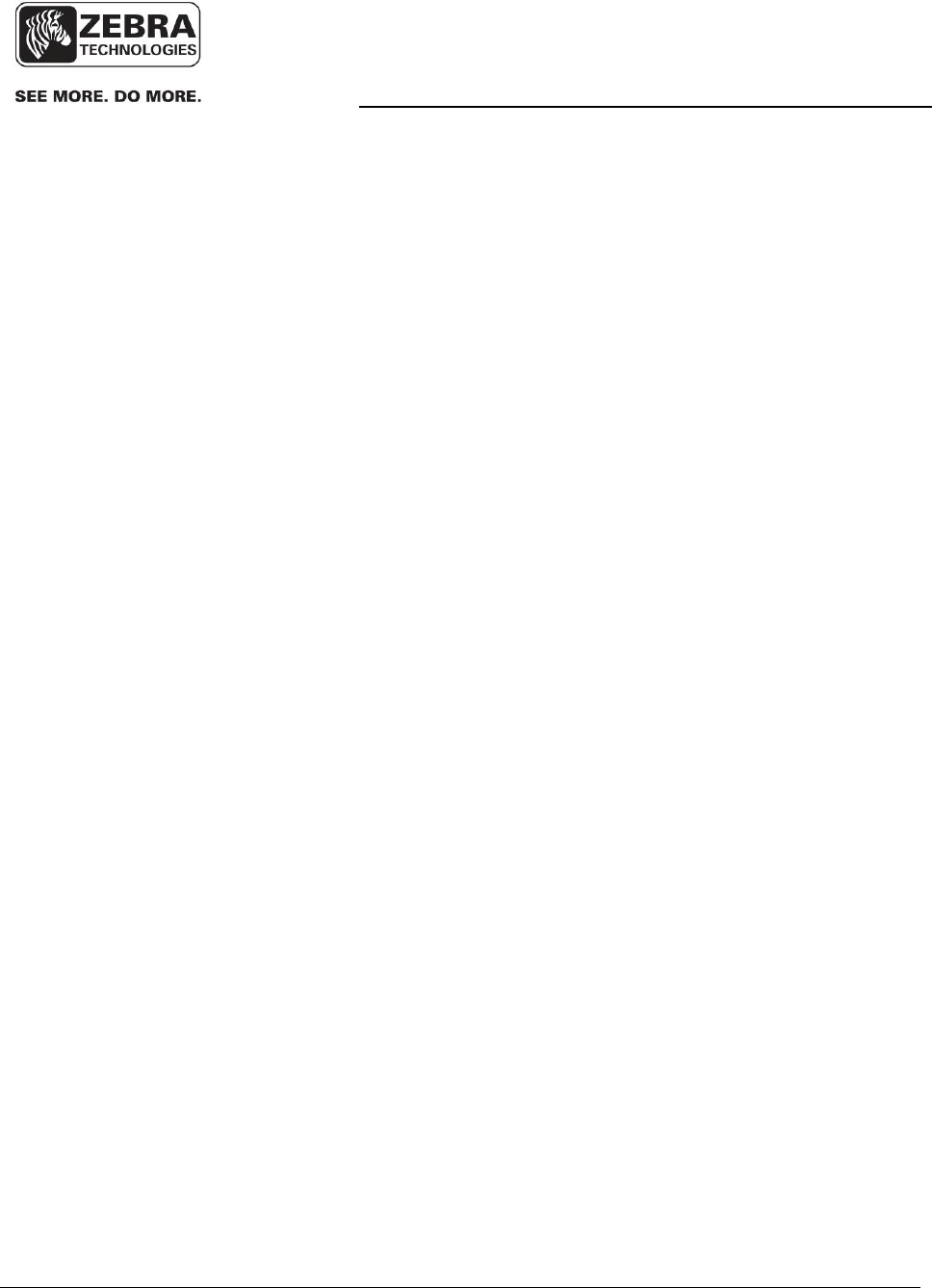
User Guide
13
User Guide, WhereTag IV GT, TFF-3110 D2280 Rev 02
© Copyright Zebra Technologies Corporation Confidential and Private
Each WhereTag IV GT has a unique identification number that is transmitted via radio
during each blink. When its battery is running low, the tag alerts the Zebra RTLS
infrastructure so that the tag can be proactively replaced. WhereTag IV GTs are configured
at the factory to work with common container handling equipment. Alternatively, the
WhereTag IV GT can be configured through the serial port by sending text command strings
as defined in appendix A.
The WhereTag unique ID number is also printed as a Code 128 on the bar code labels
affixed to the tag’s case. The bar code enables seamless integration with existing inventory
systems and delivers a cost effective total resource visibility solution that extends beyond
the range of the Zebra RTLS.
The vehicle version of WhereTag IV GT contains a screw terminal block for connecting the
tag to external power supply, RS-485 interface, contact detections and contact closure.
Designed to operate in a wide range of applications, the WhereTag IV GT is fully sealed and
will function in both indoor and outdoor environments.
1.3 WhereLan™ Location Sensor (LOS)
The Location Sensor and Locating Access Point receive the tag transmissions and forwards
the information to the Zebra Visibility Server Software which performs locations calculations,
database functions and systems management. The Location Sensors and Locating Access
Points communicate with each other and the Visibility Server Software via standard wired
Ethernet cables or an 802.11b-compliant wireless LAN. Utilizing sophisticated digital signal
processing technology, the LOS and LAP are able to track large populations of WhereTags
simultaneously. They can be installed in a grid configuration to provide ubiquitous coverage
over large areas comprised of many cells. The Locating Access Point combines multiple
functions: an RTLS Location Sensor and a Wi-Fi certified access point for wireless LAN
clients and applications.
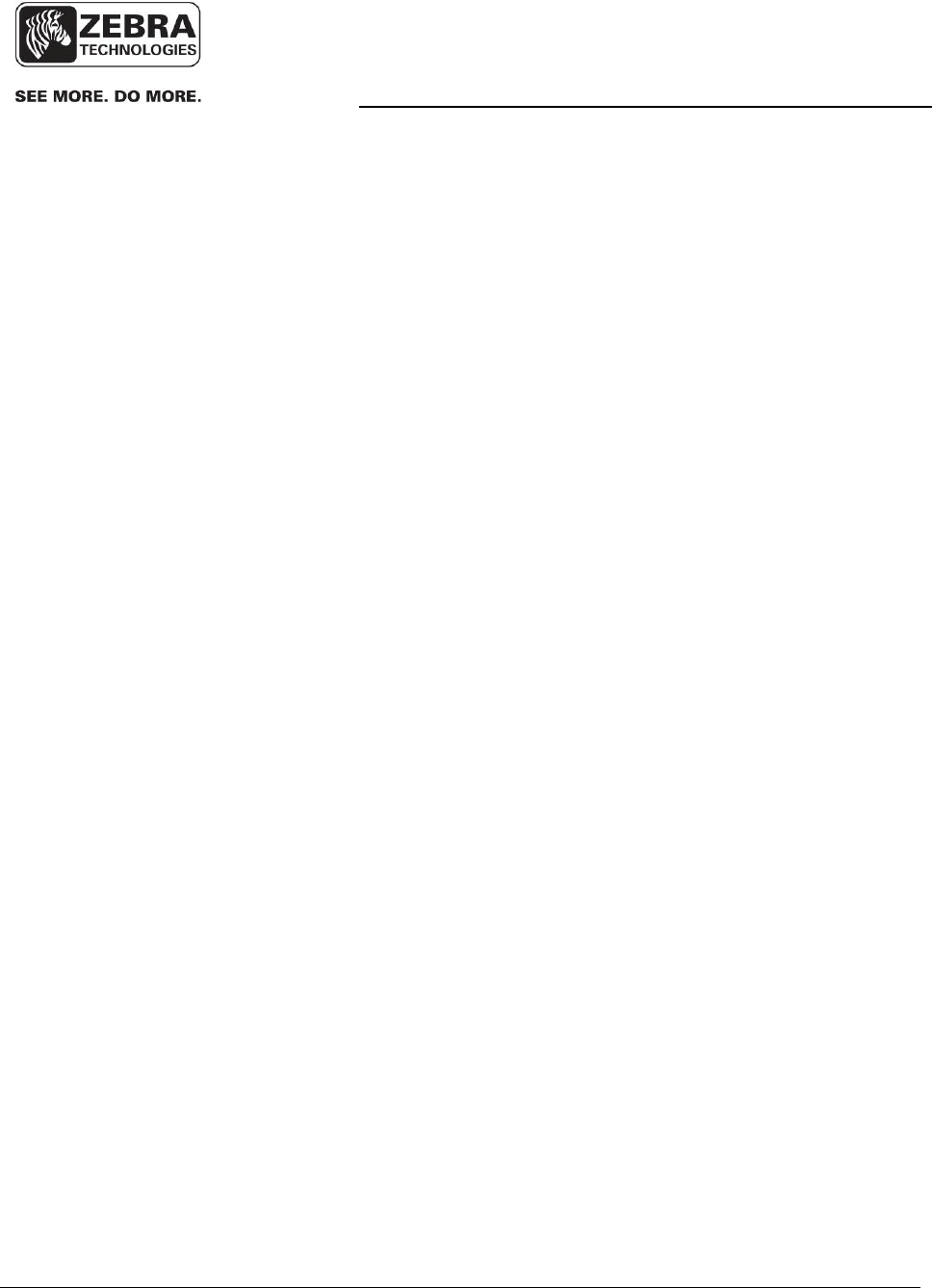
User Guide
14
User Guide, WhereTag IV GT, TFF-3110 D2280 Rev 02
© Copyright Zebra Technologies Corporation Confidential and Private
1.4 WherePort III and WherePort IV
WherePort III and WherePort IV are proximity communication devices that are used to
trigger a WhereTag to transmit an alternate "blink" pattern. When a WhereTag passes
though the WherePort's field, the tag can initiate a pre-programmed and (typically) faster
blink rate to allow more location points as a tagged asset passes through a critical threshold,
such as a shipping/receiving dock door or from one zone to another. When the WhereTag is
sending WherePort-initiated blinks, the tag includes the identification number of the
WherePort.
1.5 WhereWand Handheld Programmer
The WhereWand Handheld Programmer consists of a handheld computer with an integrated
Type II PC card and an antenna assembly. The WhereWand is capable of two-way wireless
communication with WhereTag devices. The WhereWand is also capable of wired
communication with WherePort devices. The third capability of the WhereWand is wireless
communications with the WhereLan. The WhereWand communicates with WhereTag
devices by sending magnetic FSK data to the tag and receiving on-off keyed / frequency
shift keyed (OOK/FSK) RF data from the tag. Communication with the WhereTag allow the
user to set tag configuration parameters such as DSSS blink intervals and tag responses to
such stimuli as WherePorts and/or switch/telemetry inputs. It also allows the user to read
back configuration and other data from the tag.
1.6 Visibility Server Software (VSS)
Zebra Visibility Server Software (VSS) is an integrated software package that provides all
the tools required to effectively manage assets and resources as well as the Zebra Real-
Time Locating System (RTLS). Visibility provides all core software components to allow
efficient resource management. Key among those software components is WhereSoft
Locate, which is a distributed Windows® Service. When WhereSoft Locate is combined with
VSSand any of the many applications available from Zebra, it is possible to locate assets,
know their status, and react to any number of user configurable alert conditions. Visibility
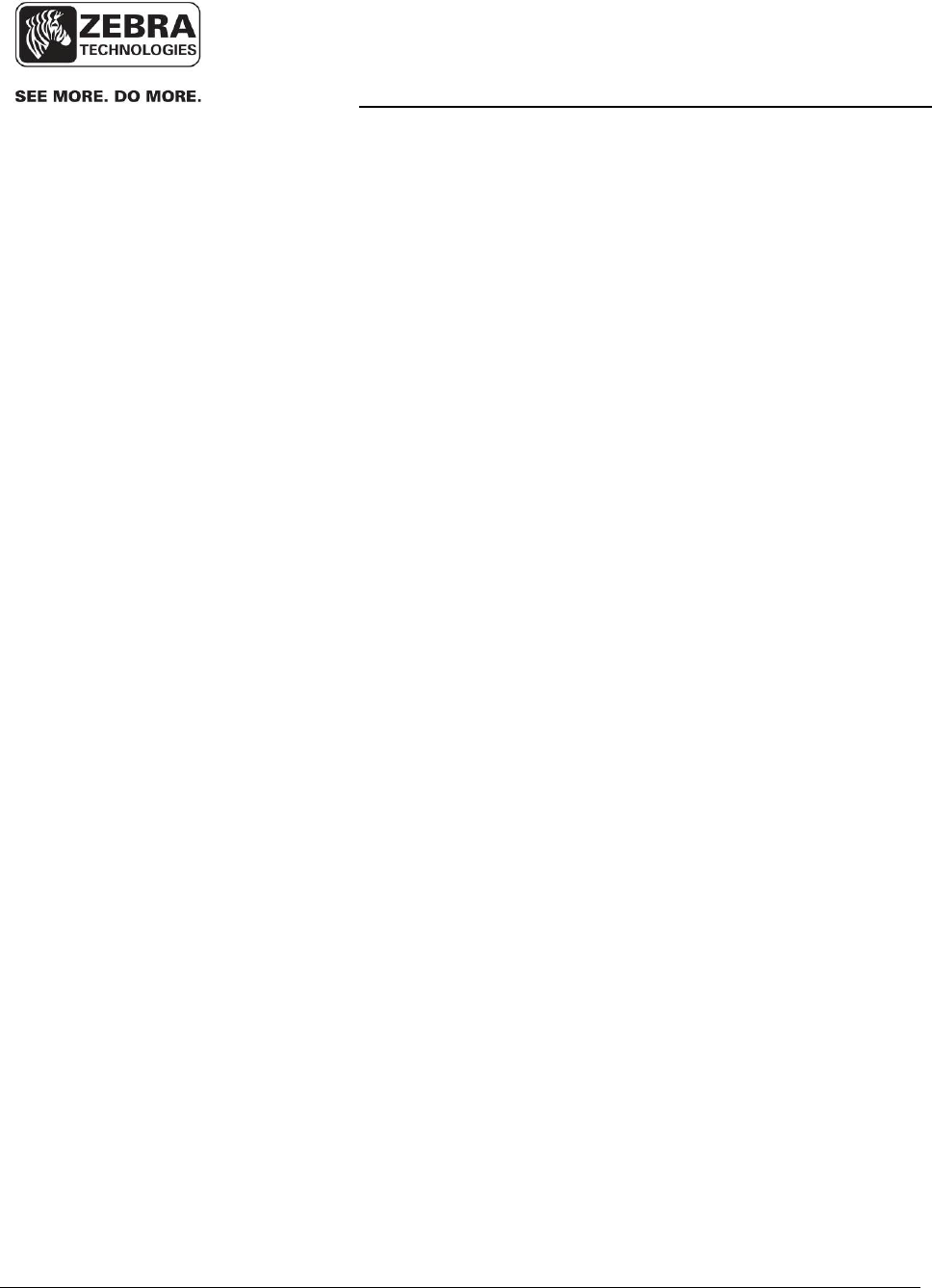
User Guide
15
User Guide, WhereTag IV GT, TFF-3110 D2280 Rev 02
© Copyright Zebra Technologies Corporation Confidential and Private
also provides the tools required to control and monitor the Real-Time Location System
(RTLS). It includes configuration tools, diagnostics, system alerts, an interface manager and
installation tools.
2 TAG INSTALLATION AND ACTIVATION
Tags are shipped with all radio emitters deactivated. Prior to installing a tag on an item to be
tracked, the tag must be activated. This is done using the Zebra WhereWand. The
WhereWand is used to configure and activate the tag, and to confirm that the tag is properly
configured and operational. The detailed procedure for tag activation is covered in the
WhereWand User’s Manual.
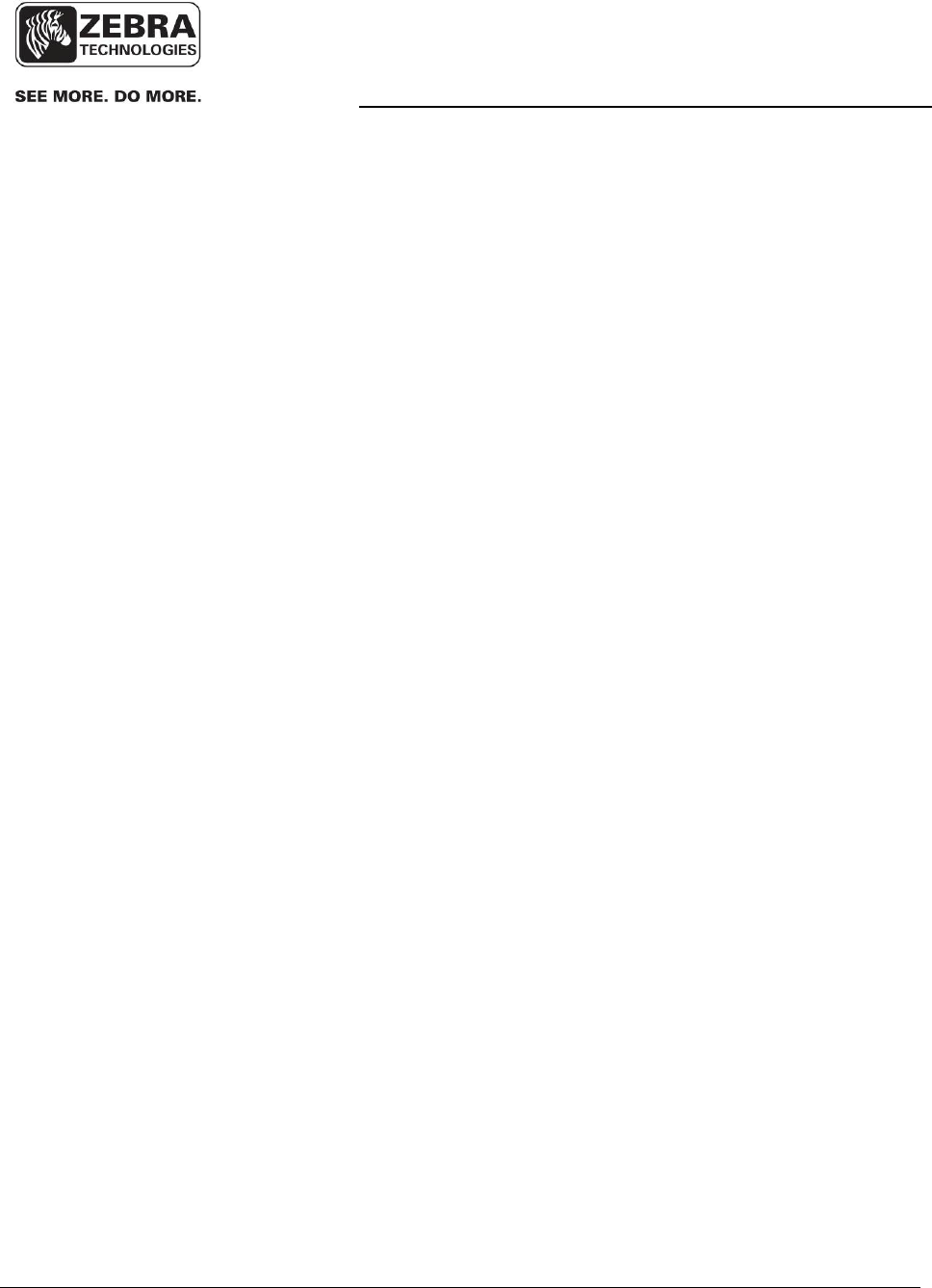
User Guide
16
User Guide, WhereTag IV GT, TFF-3110 D2280 Rev 02
© Copyright Zebra Technologies Corporation Confidential and Private
3 TAG MOUNTING OPTIONS
3.1 Introduction
The WhereTag IV GT device has a variety of ways to be mounted depending on the user’s
needs. The following mounting methods can be used:
• ... Poly-Lock™
• ... Adhesive tape
• ... screw with mounting adapter plate
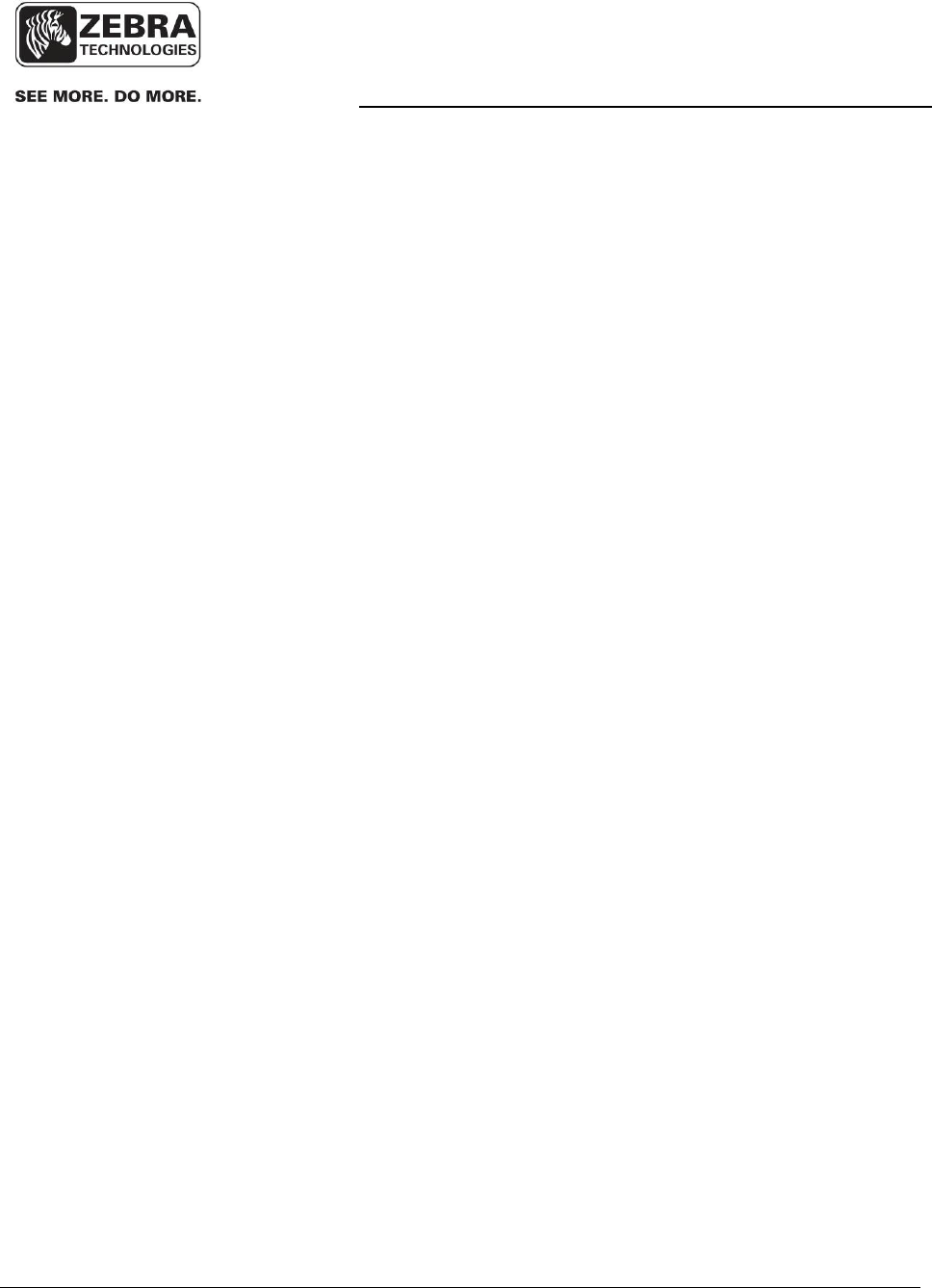
User Guide
17
User Guide, WhereTag IV GT, TFF-3110 D2280 Rev 02
© Copyright Zebra Technologies Corporation Confidential and Private
4 SPECIFICATIONS (SUBJECT TO CHANGE WITHOUT
NOTICE)
4.1 WhereTag IV GT (Model TFF-3110)
PERFORMANCE
ISO24730‐2MODE
Frequency Range .............................. ………………..2.4 to 2.483 GHz
Typical Locate Range, Indoors………………………..120 m (400 ft)
Typical Locate Range, Outdoors ........ ……………….1,000 m (3200 ft)
Typical Read Range, Indoors ............. ……………….280 m (920 ft)
Typical Read Range, Outdoors .......... ……………….1,750 m (5700 ft)
User Configurable Blink Rate ............. ……………….1 sec to 5 days
Typical Battery Life (Internal Battery)..........................TBD years (dependent on blink
rate and operating temperature)
WherePort Range …………………….. ...................... 8 m (24 ft) (With WherePort set
for maximum power and
optimum orientation.)
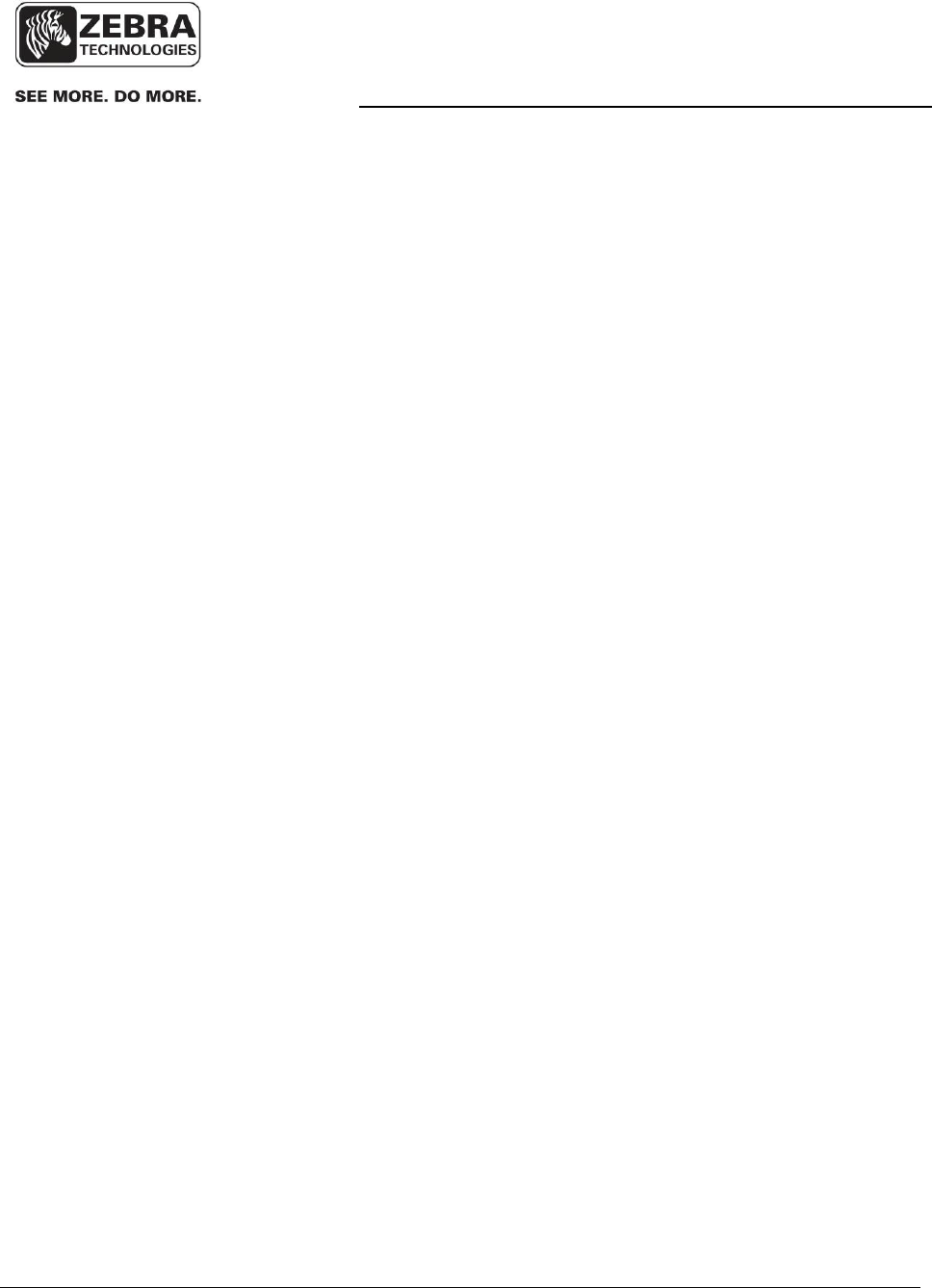
User Guide
18
User Guide, WhereTag IV GT, TFF-3110 D2280 Rev 02
© Copyright Zebra Technologies Corporation Confidential and Private
802.11B/GCCXANDCLIENTMODES
Frequency Range .............................. ………………..2.4 to 2.483 GHz
Typical Locate Range, Indoors………………………..21 m (70 ft)
Typical Read Range, Indoors ............. ……………….54 m (180 ft)
User Configurable Blink Rate ............. ……………….1 sec to 5 days
Typical Battery Life (Internal Battery)..........................TBD years (dependent on blink
rate and operating temperature)
GPSRECEIVER
Receiver Type .................................... ………………..56 Channels, GPS L1C/A
Satellite-based Augmentation System ………………..SBAS L1C/A
Horizontal position accuracy (CEP 50%)……………..3 m (10 ft)
WIREDCOMMUNICATIONINTERFACE
Protocols………………. ..................... ………………RS-485
Cable Length (Data Rate < 1Mbps) ... ……………....100 meter (328 ft) maximum
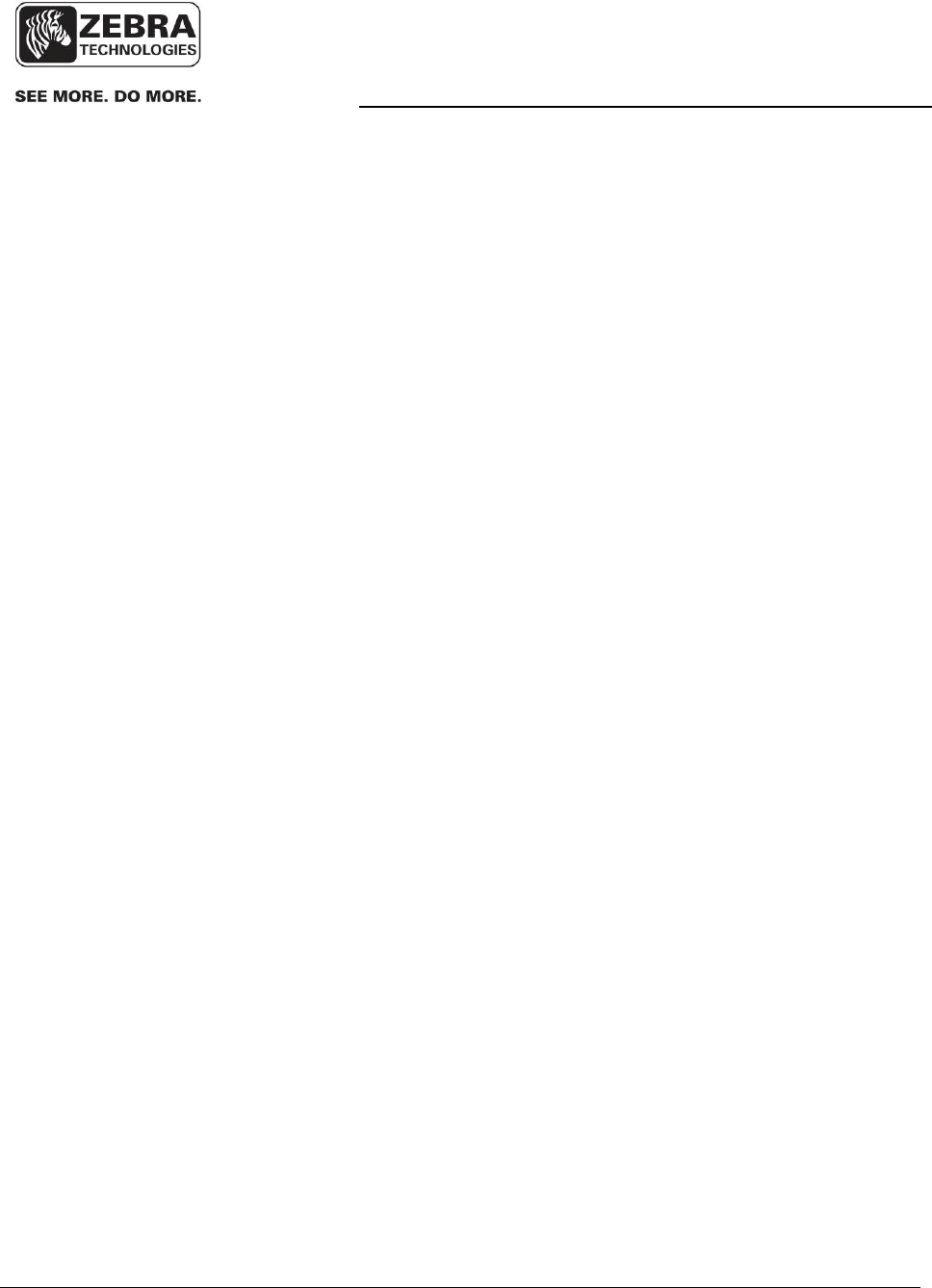
User Guide
19
User Guide, WhereTag IV GT, TFF-3110 D2280 Rev 02
© Copyright Zebra Technologies Corporation Confidential and Private
TAGMOUNTINGOPTONS
• Poly-lock
• Adhesive tape
• screw in mounting adapter
ELECTRICAL
Internal Power ................... Two D-cells, 3.6V Lithium Thionyl Chloride (the batteries
are replaceable by trained technician)
External Power .................. Input: 12VDC-25VDC, 100mA typical, 400mA maximum
ANTENNAOPTIONS
• Integral 2.4 GHz Inverted F-antenna (Zebra P/N 10370)
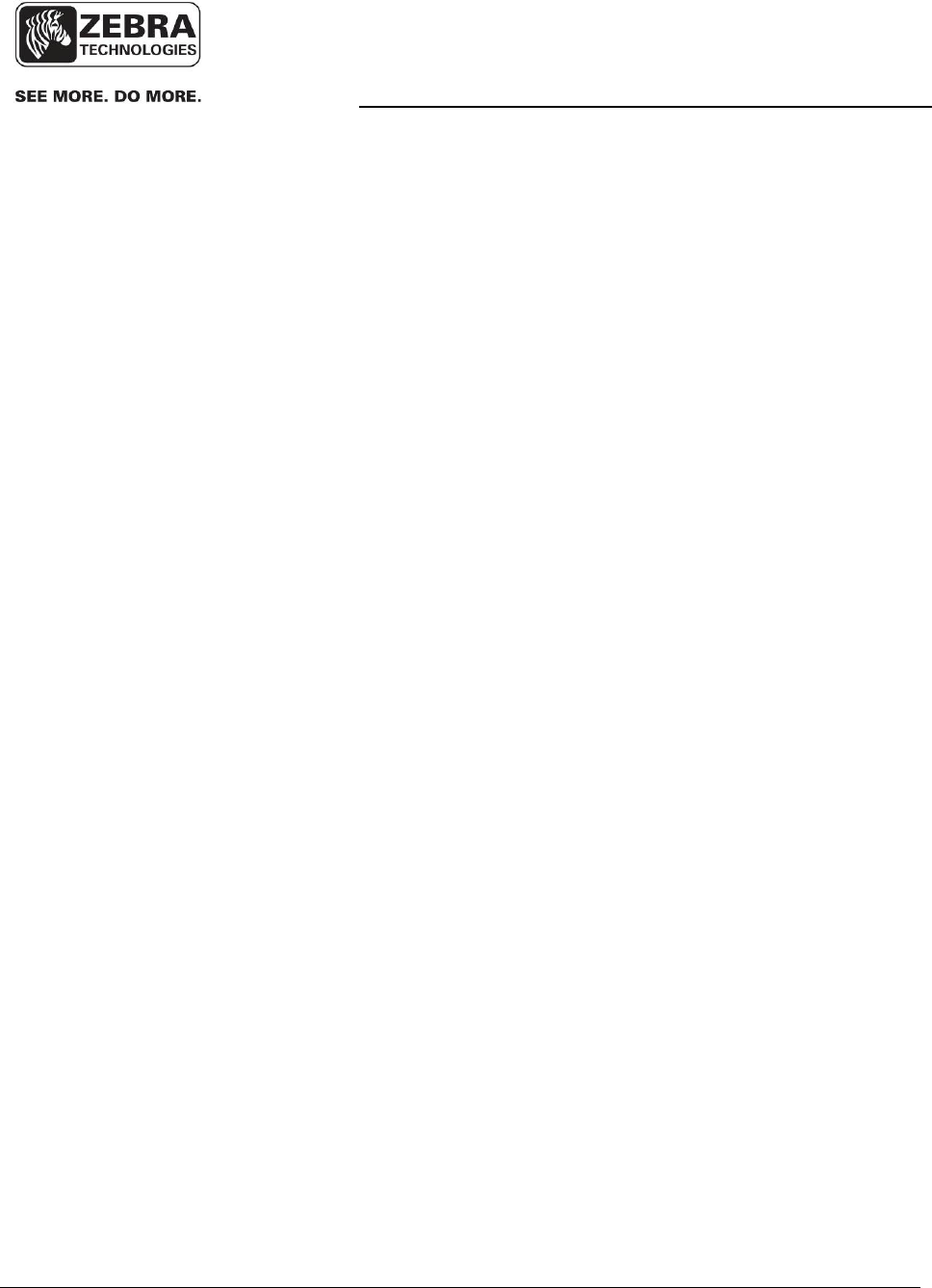
User Guide
20
User Guide, WhereTag IV GT, TFF-3110 D2280 Rev 02
© Copyright Zebra Technologies Corporation Confidential and Private
ENVIRONMENTAL/PHYSICAL
Operating Temperature Range .......... -40º C to +70º C (-40º F to +158º F)
Storage Temperature Range ............. -30º C to +30º C (-22º F to +86º F)
Durability ............................................ 1.8 m (6 ft) drop to concrete
Height ................................................ 4.57 cm (1.8 in)
Length, with mounting tabs ................ 16.3 cm (6.4 in)
Width .................................................. 9.9 cm (3.9 in)
Weight TFF-3110-00AA / -01AA ........ 540 g (19 oz) / 580 g (20.5 oz)
Environmental Sealing ....................... IP54
Case Material ..................................... Molded Plastic (polyester)
REGULATORYAPPROVALS
North America
FCC Part 15 Class B, Part 15.247
Industry Canada ICES-003, RSS-210, RSS-GEN
Worldwide
ISO/IEC 24730-2 Compliant
Cisco CCX Compliant
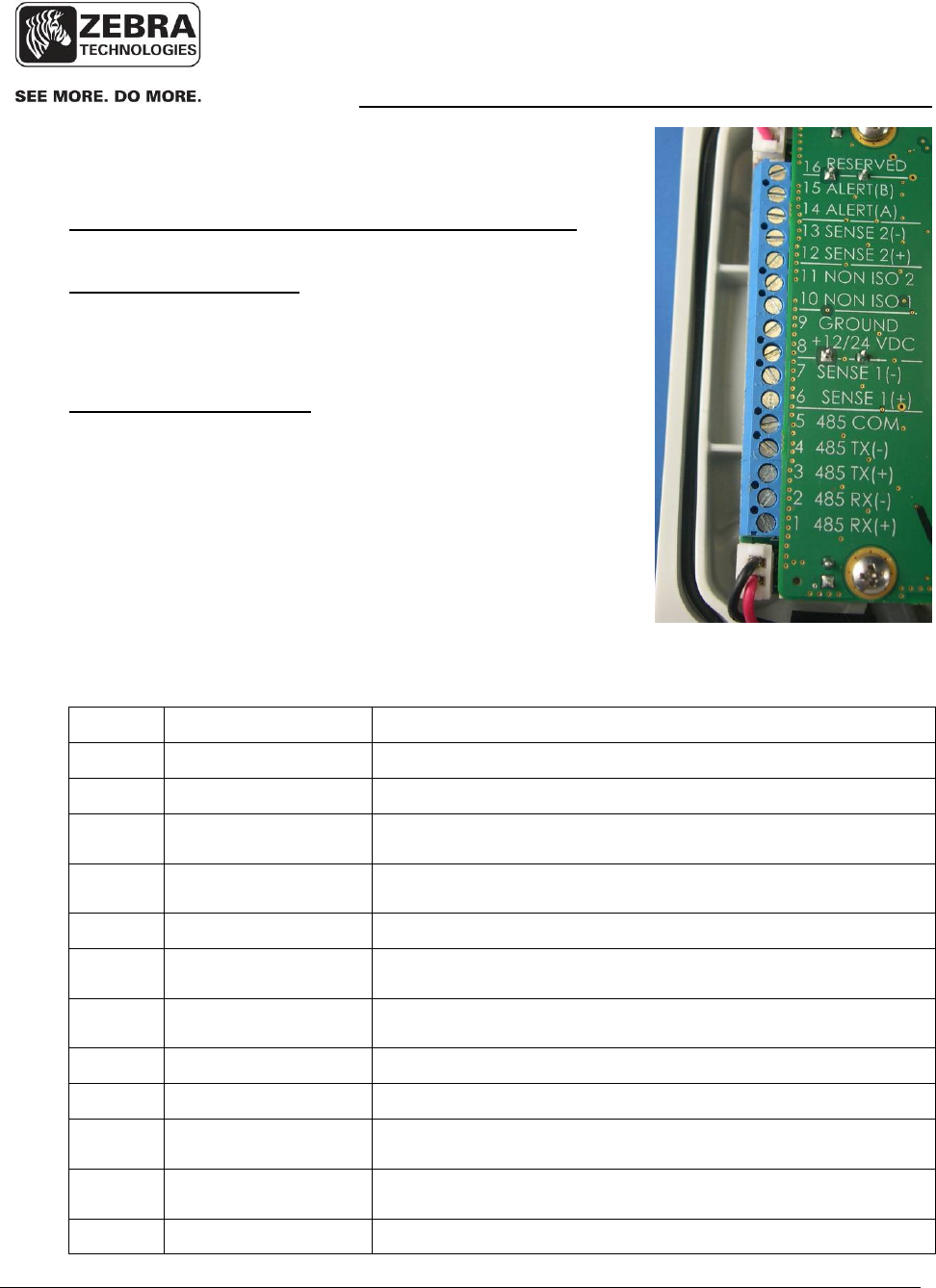
User Guide
21
User Guide, WhereTag IV GT, TFF-3110 D2280 Rev 02
© Copyright Zebra Technologies Corporation Confidential and Private
Appendix A
Physical Interface for P/N TFF-3110-01AA only
Screw Terminal Block:
Terminal Block MFG .................... ON-SHORE
Terminal Block P/N ...................... OSTTE160161
Recommended Cables:
Outer Jacket Diameter ................. 3-6.5 mm (0.11”-0.26”)
Cat-6 UTP .................................... P/N TBD
Unless otherwise specified in table below, cable length must not exceed 100 m (328
feet)
Pin Signal Notes
1 RS-485 RX(+) Isolated Input: differential pair with 120 ohm load
2 RS-485 RX(-) Isolated Input: differential pair with 120 ohm load
3 RS-485 TX(+) Isolated Output: differential pair with standard RS-485
voltages
4 RS-485 TX(-) Isolated Output: differential pair with standard RS-485
voltages
5 RS-485 COM Isolated ground for RS-485 interface
6 SENSE 1 (+) Isolated Input: differential pair for contact detection
[open or short between SENSE1(+) and SENSE1(-)]
7 SENSE 1 (-) Isolated Input: differential pair for contact detection
[open or short between SENSE1(+) and SENSE1(-)]
8 +12/24 VDC +12 VDC to +28V DC, 400 mA absolute max, 100 mA typ
9 GROUND
10 NON ISO 1 Non-isolated Input: open or close to GND
Maximum cable length must not exceed 3 m (10 feet)
11 NON ISO 2 Non-isolated Input: open or close to GND
Maximum cable length must not exceed 3 m (10 feet)
12 SENSE 2 (+) Isolated Input: differential pair for contact detection
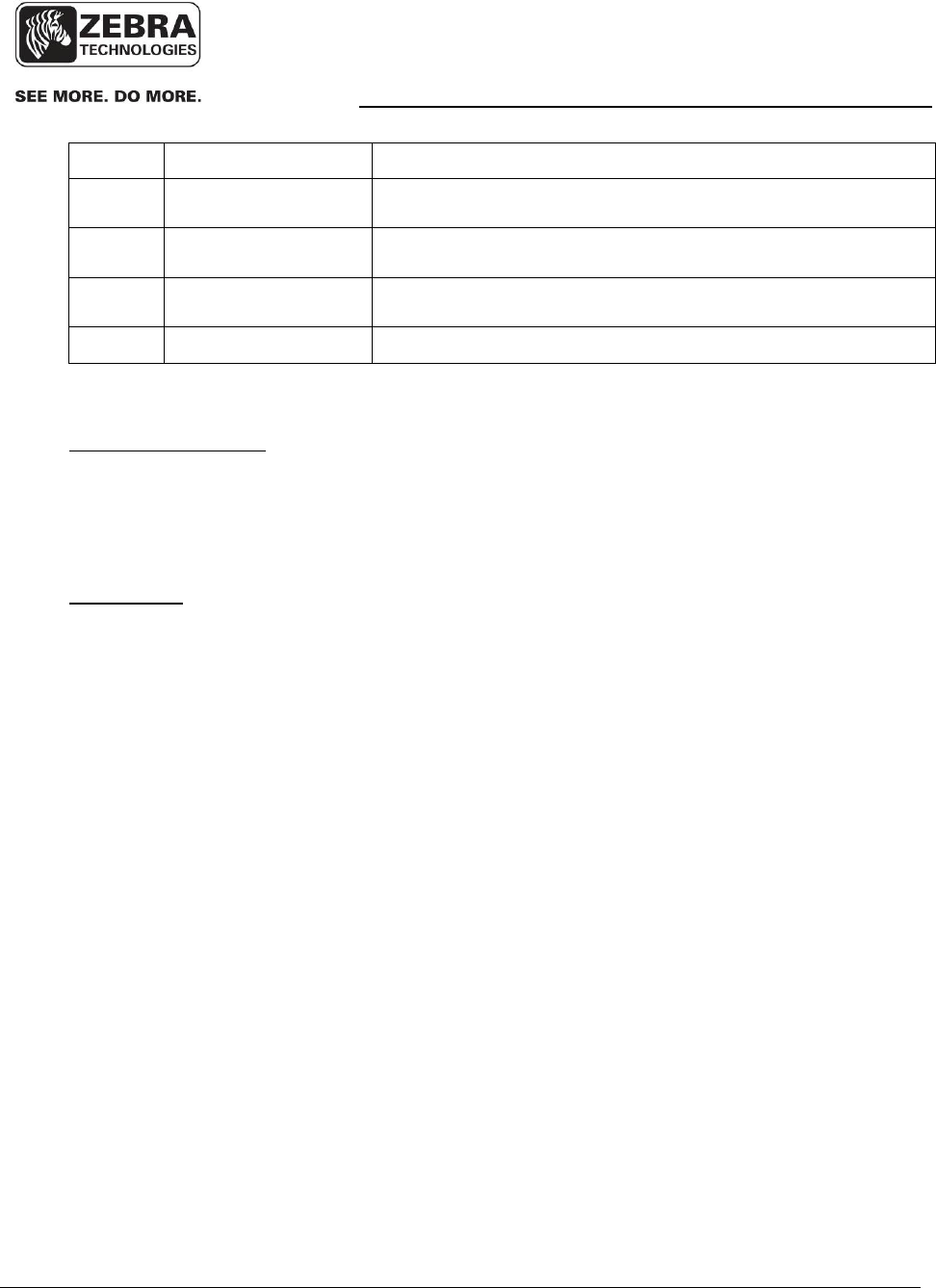
User Guide
22
User Guide, WhereTag IV GT, TFF-3110 D2280 Rev 02
© Copyright Zebra Technologies Corporation Confidential and Private
[open or short between SENSE2(+) and SENSE2(-)]
13 SENSE 2 (-) Isolated Input: differential pair for contact detection
[open or short between SENSE2(+) and SENSE2(-)]
14 ALERT (A) Isolated Output: Contact closure terminal A
100 mADC/AC max, 35 ohm on resistance max
15 ALERT (B) Isolated Output: Contact closure terminal B
100 mADC/AC max, 35 ohm on resistance max
16 RESERVED
Available Protocols
RS-485 Differential serial transmit / receive pairs
Serial Data
Baud Rate .................................... 19,200 (default)
Data Bits ...................................... 8
Stop Bits....................................... 1
Parity ............................................ None
Flow Control ................................. None